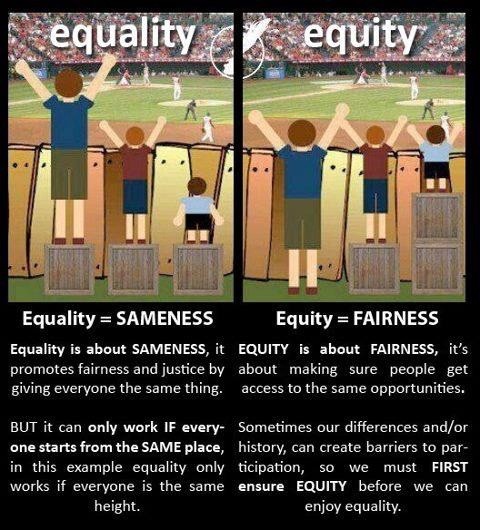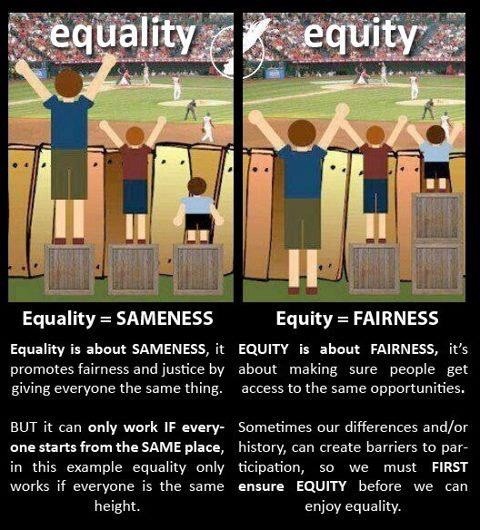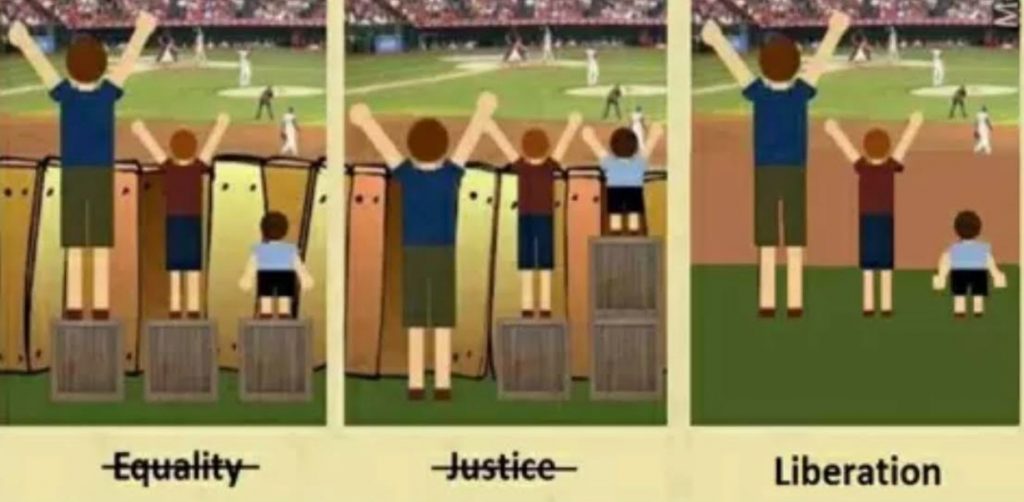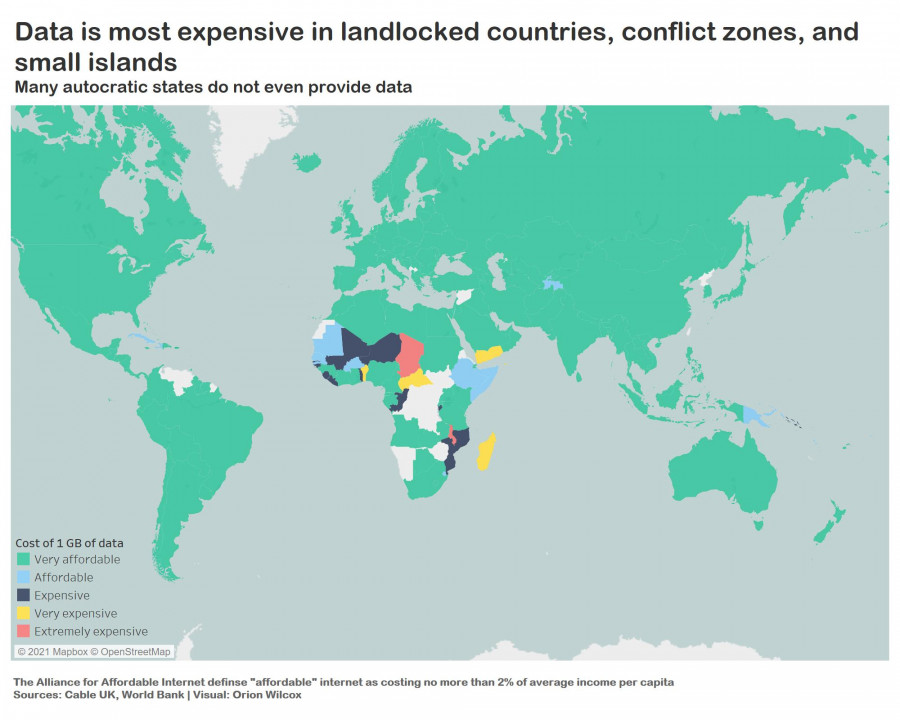
Keeping Up with the Edtech Joneses
Part 2: Debate 2:

Alternate Updated Image

Full disclaimer:
I’ve been delaying my response to this debate. More than delaying, I’ve been intentionally avoiding. Our prompt- Technology has led to a more equitable society– hit(s) me differently, on a heart rather than head level. And once the ol’ heart is engaged, emotions and memories pin down my customary objectivity.
Despite being thoroughly vocal (probably too vocal) throughout the debate, I just kept thinking: Should I even have a voice at this table? Having taught at a Following Their Voices, community school for over a decade, my experience with educational equity isn’t minimal, and my current reliance on edtech remains high as an online teacher for 2-plus years. But (and it’s a big one)…as a third-generation white settler, cisgender female who is educated, employed, and housed, how unbiased (or necessary) is my viewpoint on equity…even when well-researched?
Trying to use my voice…

While avoiding this…

So we’ll stick to the facts then…(mostly)
PRO Points to Ponder
Even though (spoiler alert!) I pre-voted CON, there’s no disputing the myriad of ways technology is attempting to level the playing field, as so eloquently outlined by Tracy, Nicole and Stephen:
–Teacher insight into student individual needs: Whether in-person or online, Canadian classrooms are becoming vastly overcrowded (please tell me this isn’t up for debate). Shy Sandy’s dyscalculia or behaviour Billy’s dyslexia can be easily missed in our sardine-tight classes. In the shared article, The Role of Technology in Reimagining School, authors Amundson and Ko observe: “[T]echnology can give teachers a bird’s-eye view of how students are solving problems. If a student is missing a critical step—forgetting the order of operations in a math problem, for example—the teacher can focus on that content.”
I’m a firm believer that relationships and conferring trump data management, gamification, and standardized anything, but in increasingly busy and crowded classrooms, having further insight into student needs definitely feels like an equitable band-aid.

These are a few of my favourite things (and if you sang that like The Sound of Music, we should be friends).
–The necessity of differentiated instruction: Further in The Role of Technology in Reimagining School, the authors note that “[t]echnology also makes it easier for teachers to share the work of developing differentiated
lessons. If every teacher is teaching two-digit
multiplication, one can develop games for skills
practice while another creates word problems.”
If equity is making sure everyone gets what they need to succeed, then differentiated instruction seems like an obvious must. Reading programs like Raz Kids and Essential Skills provide Katlyn with boredom-free challenging readings, while Abi gets the extra comprehension assistance she needs. When I look back at my own experience receiving the same Grade 7 fraction drill sheets as my brother, despite a 14-year age gap, these differentiated programs seem like a godsend for students and teachers. Of course (as was mentioned during class discussion) the danger lies in teachers viewing these sites as separate sit-and-get “solutions” for students, rather than personally investing time in individual needs.
–Inclusivity via assistive technology: One doesn’t have to look far or hard to learn about Canada’s murky past with classroom inclusivity (on a multitude of levels). According to the timeline outlined by BC Disability: “During the 1800s, young persons with special needs were simply excluded from the education system and deemed burdens, often confined to institutions where they festered away in isolation.” It wasn’t until the 1920’s that the idea of equity in education began to take root within Canadian classrooms.
Inclusivity for students with special needs remains imperfect today but assistive technologies can help level the field:
- Hearing impairments: Technology like personal FM Systems have been game-changers. At the start of my career, I was instructed, “If you have a deaf student in your classroom, try to speak loudly and face them as much as possible.” That was it – that was the strategy! As a partially deaf person for the past 4 years, my advocacy for FM (frequency modulation) systems has increased tenfold. In crowded, noisy classrooms, nothing can feel more isolating and overwhelming than not understanding the “where, what, and who” of every conversation. Something as simple as closed captioning during in-class learning or Zoom meetings makes all the difference for deaf or hard-of-hearing students (like myself).

- Visual Impairments: Classrooms are visually rich places, and visual aids can provide inclusive solutions for students; something as simple as enlarged text to more advanced tech like video magnifiers and digital text programs can make all the difference. Four years ago I taught a student designated legally blind. With proper funding, he gained access to a video magnifier. It was all he needed to transform from disengaged and “behavioural” to one of the most creative, innovative students I have ever taught!
- The list goes on…

CON Points to Ponder
When our classrooms shut down 2.5 years ago, technology was used to keep educators and students connected. 1:1 laptops sent home and various online platforms were meant to lessen the learning strain; however, as Christina, Amaya, and Matt outlined, technology did not prove to be the great equalizer.
This is the section I’ve been dreading. To remain impartial; stick to the data and studies and avoid soap-boxes and white saviourism.
So if I stick to the facts and the issues proposed, these problematic concerns with equitable technology remain:
–Disproportionate access and support: Even the article highlighted on the PRO side, The Role of Technology in Reimagining School, outlines the problematic nature of viewing technology as an equitable solution for all students in all classrooms and homes. Participants in the research group noted that “[h]alf of all respondents rated learning disparities as a significant challenge . . . Disparities that existed before the pandemic were in many cases exacerbated. The shift to remote learning was a blow to many students who were already vulnerable, particularly students of color and low income children and youth.”
While this data has been collected from the States, and we do not yet have any longitudinal studies, I can only speak to what I have experienced – much greater disparities than those highlighted in the aforementioned reading.
When the pandemic hit, my (biological) children’s very well-funded (see: parent committees and fundraisers) school shifted seamlessly online. 98% of students already had access to WIFI, 1:1 laptops/smart devices, printers, and parental support. In comparison, my community school (same town, same school division), bled our laptop supply dry…and then we begged for more. My children’s school had a 96% end-of-year completion rate, with almost 100% daily online presence in all classrooms. Amazing! My community school experienced an 80% drop in online presence; we lost families whose locations remain unknown today. As mentioned in our debate, my school (and others like it) shifted our focus to family mental health and food assistance. It became more important for little Johnny to eat than it was for him to finish Grade 4 math. As an aside: All statistics above are courtesy of the weekly 2020 email updates we received from our school division (not just numbers I randomly cite in my head).

Photo Credit: News Optimist
The debate question was raised: Was this a Covid learning gap, which happened in all classrooms and countries? My answer is: This was an inequitable learning situation before, during, and certainly after our pandemic lockdowns. In the aftermath, we now know that technology- at least in our Saskatchewan schools- did not provide equal access to the same learning opportunities. Based on the experiences of EC&I classmates from other parts of the world, equitable access is certainly not a Saskatchewan-based problem either. But I digress…
–Global digital divide: My teaching experience and email statistics aside, when looking on a global scale, the disparities remain alarming. In The Global Digital Divide, Khan Academy author, Pamela Fox uses interactive maps and statistics to highlight the remaining inequitable global data. The reasons listed by the author for this broadening gap? Infrastructure (largely based on government funding), geography (some places are more remote than others), difficult terrain, gender identity, and government restrictions (internet black holes, shutdowns, kill switches). Politics alone make it difficult to term technology as equity-driven.

–Issues with “Big Tech” Companies: A major issue, and one I will be elaborating on in my own debate topic (just felt it was definitely worth noting).
If not everyone has a seat at the table, can the table be equitable?
My final takeaways? The topic – Technology has led to a more equitable society– is exhaustive! Technology has created equalizing opportunities for a variety of learning styles, needs, and (dis)abilities. I’ve cried listening to a student communicate with me for the first time via assistive tech and basked in the sound of my noisy classroom, courtesy of my new hearing aid. These technological wonders; however, do not come without an (inequitable) price tag, one not everyone can afford. Any assistive tech in my school has required hours of teacher/parent/programming teamwork and advocacy (writing countless grant letters to places like Jordan’s Principle). Without that advocacy, and those “dollah-bills”? No tech to create equal access to learning opportunities. As stated by authors Kelly and Weeden in The Digital Divide Has Become a Chasm: Here’s How We Bridge the Gap: “[D]igital injustices are layered and complex, and reflect the systemic and structural barriers to full participation that have Canada’s disconnected digital policies.”
In short (or actually long…I know this is soooo long), there is work to be done. We cannot be distracted by flashy technology (though I love it) or small gains in equal access (though some exist). If even one student goes without equitable learning solutions, then the system as a whole is not equitable. Not yet; not without continued awareness and advocacy.

Hello Kim,
I love the first visual you posted as well, there is an updated version that shows a third option called inclusion, where it removes the fence! I really appreciate that you discussed your position as an educator in this context, I know I also feel the need to share my positionality as it is impossible to remove ourselves from our contexts. I like how you say how technology has led to equity for learning styles, needs, and (dis)abilities. I agree, adaptations for some often benefit all, so we may as well offer them!
Thanks for the response, Leah (even though I posted this kind of late). I will definitely have to take a look at the updated image! I love having the poster up in my classroom when students struggle with the idea of “fair”…etc. It is very difficult to remove ourselves from the issue – and I struggle with how much “heart” to bring to the table versus data. I’m working on understanding that heart is valid, too. Yes, we must use the tech provided to us because some will benefit; we just can’t settle there. Again, thanks for the thoughtful response.
Yes! I love how you included a third option, being inclusion. This is something that I think gets missed all too often. Even though I think our practicing definition of inclusion could look a bit different, it is something that needs to be remembered when we are teaching and incorporating technology into our classrooms.
I also really like how you used a table to compare the pros and cons of the argument. This was an easy way to see both sides and to digest the information better. I should try to use a table, as I haven’t used a table block for quite some time now.
Thanks! Organizing it into columns is the only way my brain works – lol! I have to see things side-by-side or it doesn’t work for me. As you say, it’s a tricky job of making our classrooms inclusive for all, but definitely important.